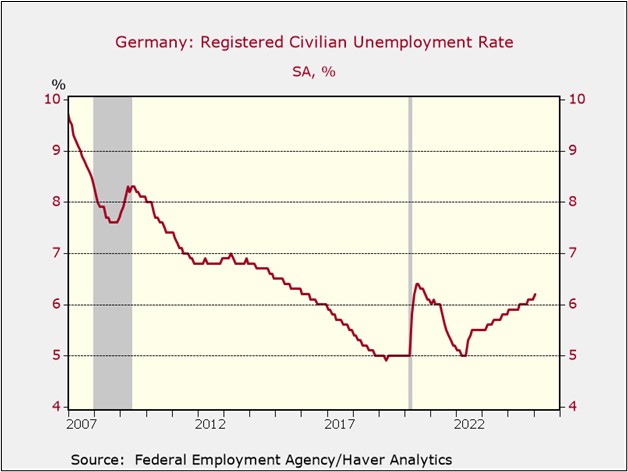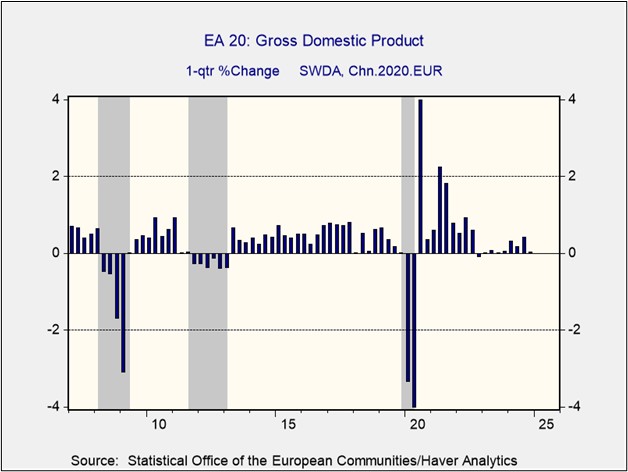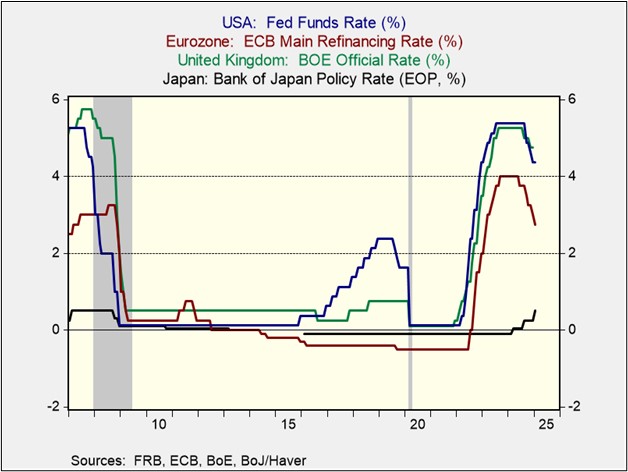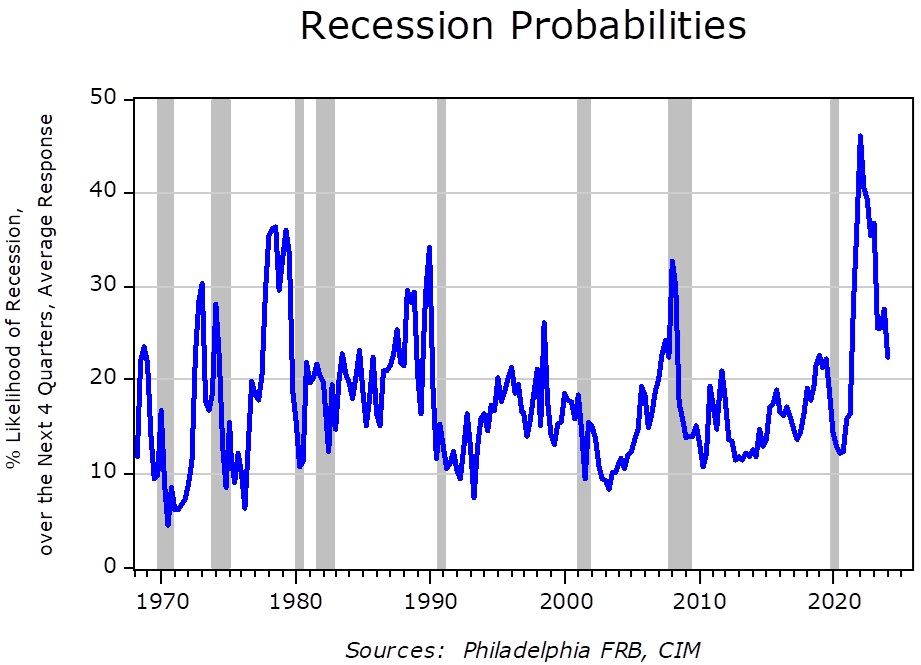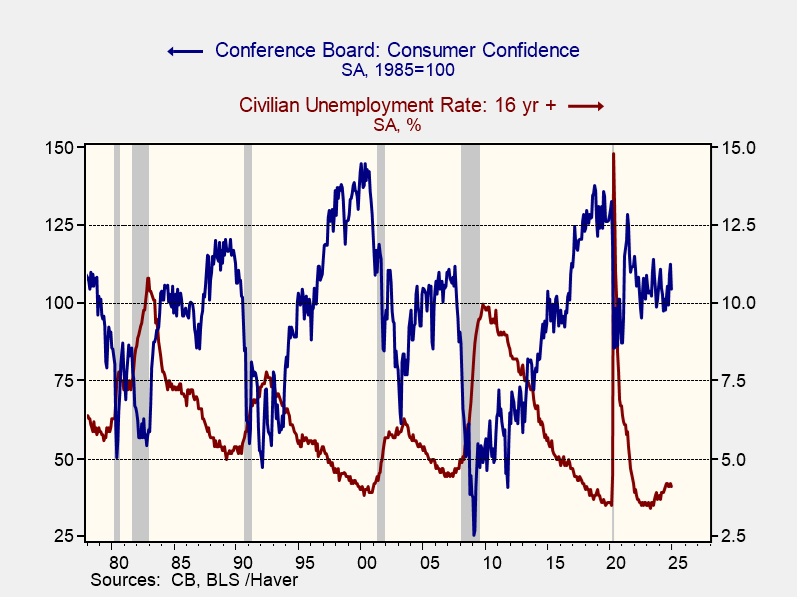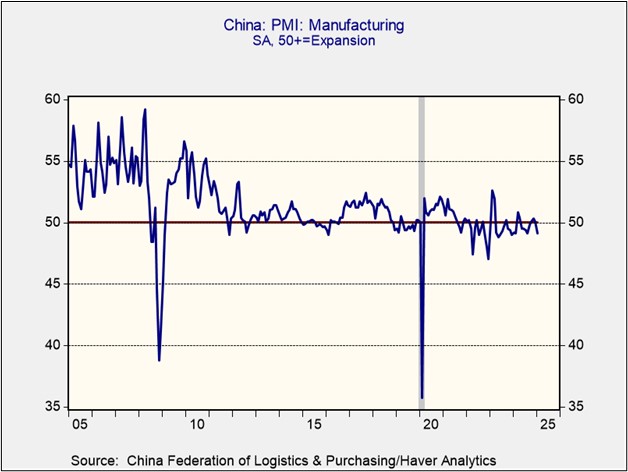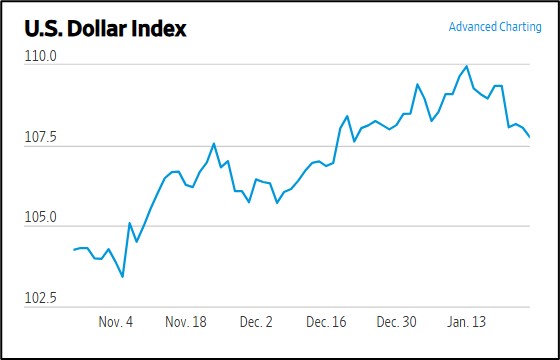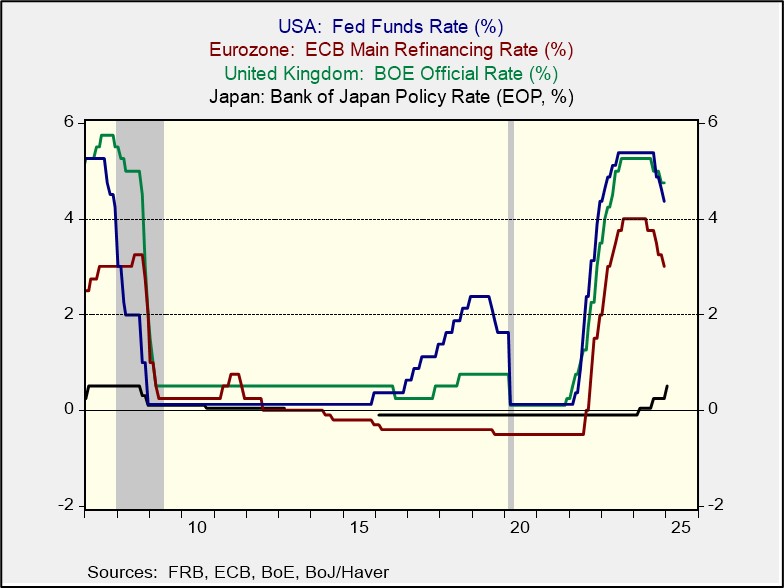by Patrick Fearon-Hernandez, CFA, and Thomas Wash
[Posted: 9:30 AM ET] | PDF
Our Comment today opens with news of a massive new command complex being built for the Chinese military — a move the portends further US-Chinese geopolitical and economic tensions over time. We next review several other international and US developments with the potential to affect the financial markets today, including more signs of political and economic change in Germany and a warning from a major hedge fund that the US cryptocurrency market is in a dangerous bubble.
China: According to the Financial Times, the Chinese military is building a massive command center and bunker complex on the outskirts of Beijing. The complex will apparently be some 10 times bigger than the Pentagon and should facilitate China’s effort to better integrate the various branches of its armed forces. The deep bunkers also underline China’s intention to become a more credible nuclear power. In sum, the new facility reflects China’s rapid, on-going military expansion and the likelihood of continuing US-China geopolitical tensions.
German Politics: Ahead of next month’s elections, the center-right Christian Democratic Union this week won parliamentary approval for a nonbinding resolution to drastically restrict immigration, but only with the support of the far-right Alternative for Germany (AfD) party. The move broke Germany’s longstanding taboo against cooperating with the AfD and sets the stage for a possible right-wing coalition after the February 23 elections.
German Economy: German defense contractor Hensoldt, which makes air defense radars, is reportedly negotiating with auto suppliers Bosch and Continental to hire almost 200 of their workers facing layoffs. The talks reflect the changing dynamics in Germany’s industrial sector, where defense firms are booming amid today’s geopolitical tensions and increased defense budgets, while automotive firms are struggling amid stagnating exports and foreign competition. The talks also help affirm our positive view on European defense stocks.
- On a related note, data today showed Germany’s registered unemployment rate rose to a seasonally adjusted 6.2% in January, up from 6.1% in December.
- Excluding the pandemic period, the registered unemployment rate is now at its highest since 2016.
Sweden-Iran: After an anti-Islam campaigner famous for public burnings of the Koran was shot and killed near Stockholm on Wednesday, the Swedish government has indicated it is probing whether the murder was instigated by a foreign power. The most likely government that might attempt such an assassination is probably Iran.
- In any case, if such a connection is confirmed, it would underline the increased aggressiveness of the top authoritarian countries in the China-led geopolitical bloc, including China, Russia, Iran, and North Korea.
- If the murder is linked to a foreign power such as Iran, it would worsen the current geopolitical tensions between Western countries and countries in the China bloc.
Israel-Hamas: While the ceasefire between Israel and Hamas in Gaza continues, Hamas is increasingly making the daily release of Israeli hostages a humiliating, televised spectacle. For example, the militant group is releasing hostages into angry mobs in front of the demolished homes of Hamas leaders killed in the fighting. The tactic creates a risk that Tel Aviv will bring the ceasefire to an end and rekindle fighting around the region.
United States-Canada-Mexico: Even though President Trump yesterday reiterated his intention to slap broad tariffs on imports from Canada and Mexico by Saturday, administration officials are reportedly still talking with Ottawa and Mexico City and may impose only targeted levies. Whether the tariffs are universal or targeted, they could include a grace period before they are formally imposed, and they may rely on existing authorities rather than the novel approaches that officials have floated.
- According to the report, the Mexican government has already agreed to set up a joint task force with the US to tackle cross-border migration and fentanyl trafficking.
- The Canadian government is reportedly still in negotiations with the US to set up a similar task force.
US Fiscal Policy: In the wake of the fatal collision between an American Airlines plane and an Army helicopter in Washington on Wednesday, President Trump yesterday implied that the cause was lax standards and diversity, equity, and inclusion policies under Presidents Biden and Obama. According to Trump, the Federal Aviation Administration under Biden was “actively recruiting workers who suffer severe intellectual disabilities and psychiatric problems and other mental and physical conditions” under DEI initiatives.
- When asked to provide evidence for his assertion, Trump merely replied, “Because I have common sense.”
- Coupled with the new administration’s many executive orders against DEI programs and firings of personnel related to DEI initiatives, the statement suggests that DEI has become an all-purpose epithet to justify personnel or program cuts across government.
- We mention this strictly because it could have implications for investors: It now appears that political rhetoric focusing on DEI complaints could well be a useful signal of where the hammer may next fall in terms of top officials about to be fired, program reductions, or broad layoffs under the new administration.
US Cryptocurrency Policy: In an investor letter, hedge fund Elliott Capital Management warns that cryptocurrencies have become the most dangerous asset bubble in today’s investment frenzy, not only because of the size that the crypto market has attained, but also because of the Trump administration’s support of it. Elliott criticizes crypt assets as having “no substance” and warns that the “inevitable collapse” of the crypto bubble “could wreak havoc in ways we cannot yet anticipate.”
- While it’s true that many assets have extremely high valuations today, it’s notoriously difficult to identify which assets are in a true bubble, and when any such bubble might burst.
- A key issue is whether a retrenchment in the crypto market would spread to other areas of the financial system. A particular risk would be if banks or other traditional parts of the system have provided leverage to crypto buyers. The crypto winter a couple of years ago revealed only limited problems, but we continue to monitor the markets for any sign that such risky linkages have become more significant now.



